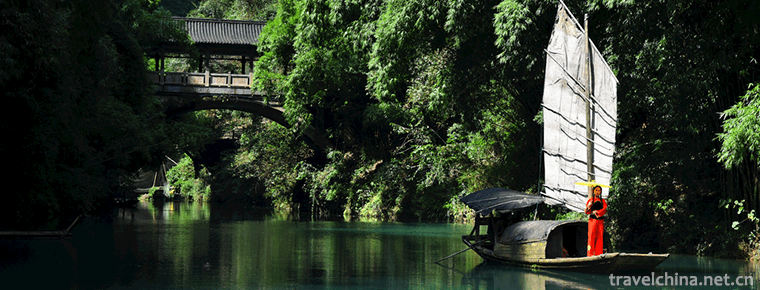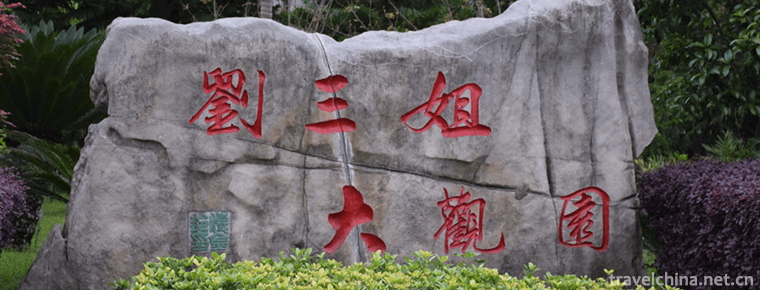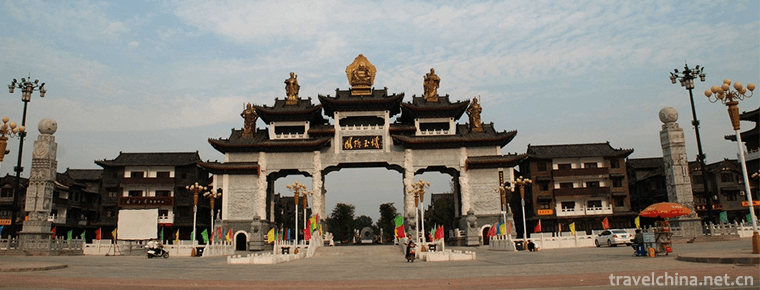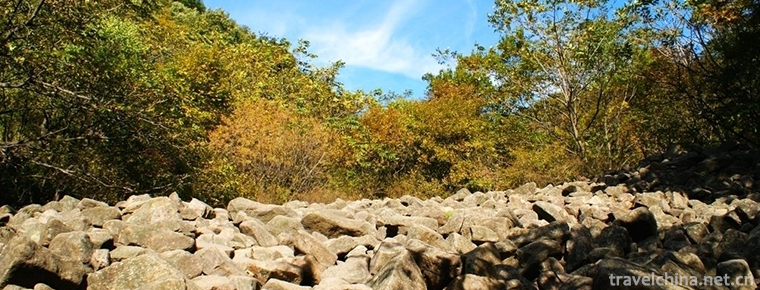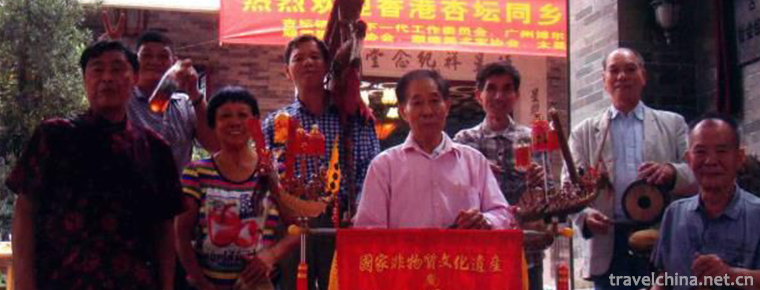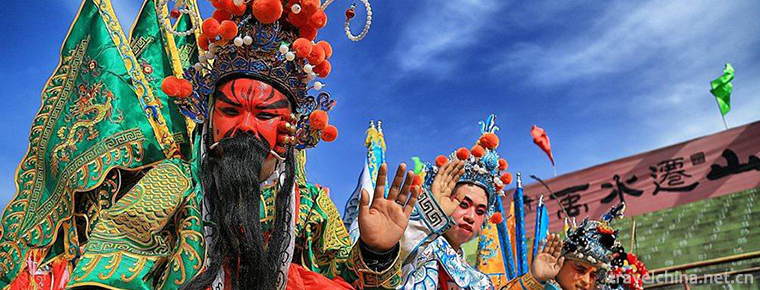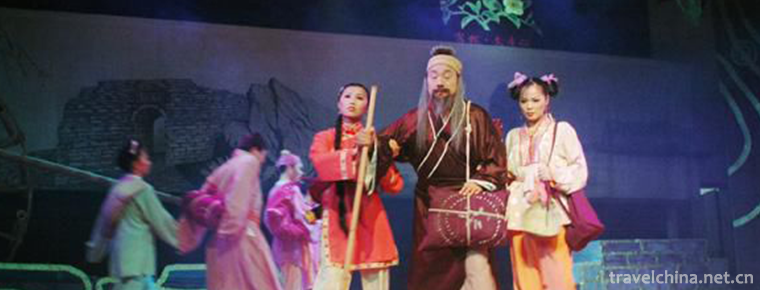Making Techniques of Lanzhou Yellow River Waterwheel
Making Techniques of Lanzhou Yellow River Waterwheel
Lanzhou Yellow River waterwheel production technology, Lanzhou City, Gansu Province, local traditional handicraft, one of the national intangible cultural heritage.
Lanzhou Yellow River waterwheel production technology uses Pinus tabulaeformis in Daxing'an Mountains and willow and elm in the north as raw materials, after drilling, pulling mortise, tenon wedge, dock, piggyback beam and axle processing, and finally on-site installation is completed.
On May 20, 2006, the craftsmanship of Lanzhou Yellow River waterwheel was approved by the State Council and listed in the first batch of national intangible cultural heritage list, project number: _-48.
historical origin
The Yellow River Waterwheel originated in the Ming Dynasty. According to the Record of Rebuilding Gaolan County, it was created by Duanjiatan Renduan in Lanzhou in the Ming Dynasty. "When Xuliju lived, he turned over the car and pulled the river upside down to irrigate the fields, which gave rise to ingenious thinking. Farmers in Chuanhe follow suit. Duan continued his career in his early years after several ups and downs, returned to his hometown in his later years, and devoted himself to the imitation of waterwheel. After many repetitions, Duan finally succeeded in Jiajing's thirty-five years (1556).
In 1556, Duan continued to learn from the irrigation technology of drum cars in Tonghe, Yunnan Province, and created a waterwheel suitable for local use in Lanzhou. Beginning to erect on the North Bank of the Yellow River outside Guangwumen. Later, three rounds were erected at the north entrance of Zhenyuan Road to irrigate more than 600 mu vegetable border orchards nearby. This is the place name "Waterwheel Park". Since the end of Ming Dynasty, water carts have been widely used in Gaolan, Baiyin, Jingchuan, Pingliang, Yinchuan and Shaanxi in the Yellow River Basin, which has promoted the development of agricultural production in these areas.
In 1952, Lanzhou waterwheel reached its heyday. There were 252 waterwheels on both sides of the Yellow River. The total irrigation area increased from more than 20,000 Mu before the founding of New China to 100,000 mu. Especially from Guangwumen to Yantan River, it is also the gathering place of waterwheel. Single-wheel, double-wheel, three-wheel, five-wheel and other forms are different and magnificent. Therefore, here is also known as "Waterwheel Park", Lanzhou is also known as "Waterwheel City".
Process characteristics
Lanzhou Dashui Truck seems to have simple structure and no traditional drawings, but it has exquisite conception, complex structure, ingenious conception, exquisite material selection, local materials, exquisite production technology, the use of Pinus tabulaeformis in the Great Hinggan Mountains and willows and elms in the north, showing the superb wisdom and excellent skills of traditional craftsmen.
1. Advanced technology, low cost, labor saving and labor convenience have changed the situation of the two sides of the Yellow River feeding on the sky, so it has the characteristics of dependence.
2. Because of the vast land and extensive use in the Yellow River Basin, it has extensive characteristics.
Thirdly, Duan Xun changed to use elm, Sophora and willow to make waterwheel according to local conditions, so it has the characteristics of simplicity.
4. Since the creation of the waterwheel, it has been standing on the Bank of the Yellow River. With the flow and inertia of the water in the Yellow River, it drives the rotation of the waterwheel, so it has the ornamental characteristics.
Inheritance and protection
Inheritance value
Lanzhou Waterwheel is an important part of the culture of the Yellow River Basin. It contributes a lot to the people of Lanzhou and the lower reaches, and plays an immeasurable role in the development of Lanzhou society. As an important part of the Yellow River culture, it also embodies the creativity of the Chinese nation and provides evidence for the study of Chinese agricultural civilization and water history.
Inheritance status
In 1952, there were still 252 water trucks along the Yellow River in Lanzhou. Since the electric irrigation technology has been widely used, the number of water trucks has been decreasing year by year, and the producers have few successors. Facing the endangered situation, it has become an urgent and important task to protect the production technology of the Yellow River water truck.
Inheriting characters
Duan Yicun, male, on May 16, 2018, Duan Yicun was selected as the representative successor of the fifth batch of national intangible cultural heritage projects, which was declared by Lanzhou City, Gansu Province. Project Name: Lanzhou Yellow River Waterwheel Manufacturing Techniques.
protective measures
On August 26, 2005, Lanzhou built a waterwheel exposition park, which reproduced the spectacular scene of waterwheel stands on both sides of the Yellow River more than 50 years ago.
In 2007, in order to protect this precious traditional cultural heritage, "Lanzhou Yellow River Waterwheel Production Techniques" was included in "Lanzhou Historical and Cultural Heritage Protection Plan", which was protected by legislation.
social influence
Important exhibition
In 2006, 2007 and 2008, Lanzhou Yellow River Waterwheel was invited to attend the China (Shenzhen) International Cultural Industry Fair (hereinafter referred to as the "Cultural Fair") held at the Shenzhen Convention and Exhibition Center, and won high praise.
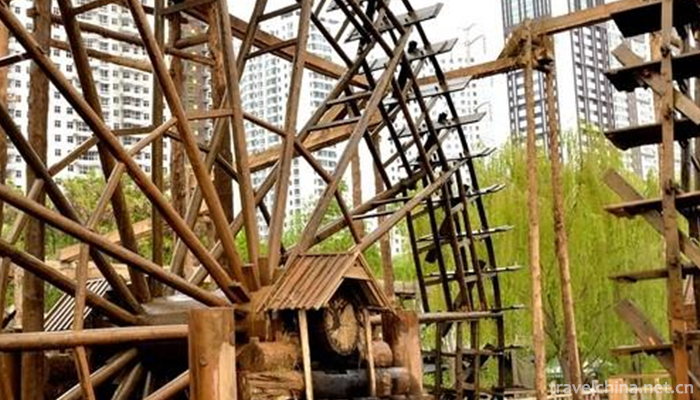
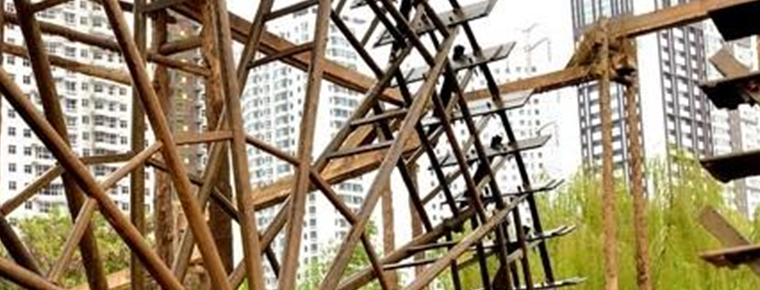
Making Techniques of Lanzhou Yellow River Waterwheel
-
Three Gorges Household Scenic Area
Three Gorges Household Scenic Area, National AAAAA Class Tourist Area, the First Batch of Civilized Scenic Area in Hubei Province, Top Ten Scenic Spots in Hubei Province
Views: 163 Time 2018-12-12 -
Wanpingkou Scenic Area
Wanpingkou scenic spot is located in Rizhao, a beautiful coastal city in Shandong Province. "Tourist sunshine is bound to Wanpingkou" has become the consensus of tourists around the world
Views: 107 Time 2018-12-17 -
Liu Sanjie s Grand View Garden
Liu Sanjie Grand View Garden, formerly known as Guilin Liu Sanjie Landscape Garden, is located on the Peach Blossom River in Guilin City, Guangxi Zhuang Autonomous Region. It covers an area of more th
Views: 167 Time 2018-12-26 -
International Jade City
International Yucheng is located in the south of Shifosi Town, Zhenping County, Henan Province, on the south side of Yuyuan Avenue, south to Liulu Highway, east to Erlong Road, north to Longxiang Road
Views: 158 Time 2019-01-13 -
Limutai Natural Scenic Area
Limutai Natural Scenic Spot is located at the northernmost end of Tianjin, known as "Tianjin Arctic". In the scenic area, the peak forest and canyon are strong and dangerous
Views: 216 Time 2019-01-29 -
Dragon Boat rap
Dragon boat rap, also known as "Dragon Boat", "Dragon Boat Song", "Dragon Island Song" or "Shunde Dragon Boat", is a popular form of folk art in the Pearl River
Views: 153 Time 2019-05-14 -
Folk fire Min Jian She Huo
Folk society fire is a kind of folk entertainment popular in China during the Spring Festival. It is widely spread in Shaanxi, Shanxi, Hebei, Henan, Liaoning and other provinces. On May 20, 2006, Folk
Views: 176 Time 2019-06-05 -
Wennan Ci
Wennan Ci, also known as Wenci opera and Wenci opera, is an ancient traditional opera, and is praised as the "living fossil" of Chinese opera. It is popular in Dongzhi County and Susong Coun
Views: 105 Time 2019-06-28 -
Anhui Normal University
Anhwei Normal University (Anhui Normal University), known as AHNU, is located in Anhui province. Wuhu City It was founded in 1928, and in the period of the Republic of China. National Anhui University
Views: 194 Time 2019-10-10 -
Borneol Bridge
Luxian county is the "hometown of dragon culture" and "the hometown of Longqiao" in China. There are hundreds of ancient Longqiao bridges in the Ming and Qing Dynasties in Luxian County, which is the largest group of Longqiao in China and even in the world.
Views: 157 Time 2020-10-16 -
Leshans first industry
In 2019, the sown area of crops in Leshan City is 344100 hectares, an increase of 3318 hectares over the previous year. Grain planting area was 217800 hectares, an increase of 122 hectares over the previous year; oil planting area was 46500 hectares
Views: 335 Time 2020-12-17 -
Climate of Nanchong
Nanchong belongs to the subtropical humid monsoon climate. Compared with the Yangtze River Valley in the south of the basin, the temperature is relatively low, the rainy season is longer and the rainstorm is more. Compared with the Western Sichuan plain
Views: 284 Time 2020-12-17
